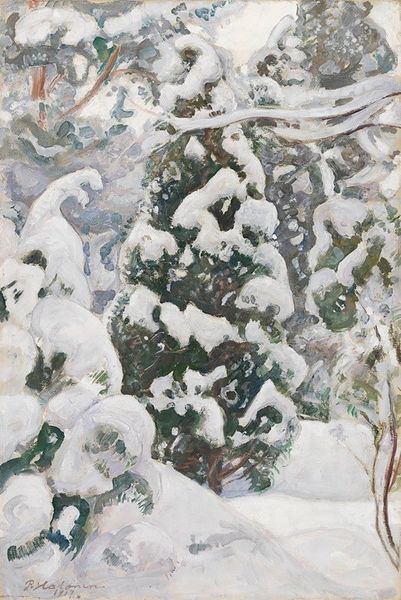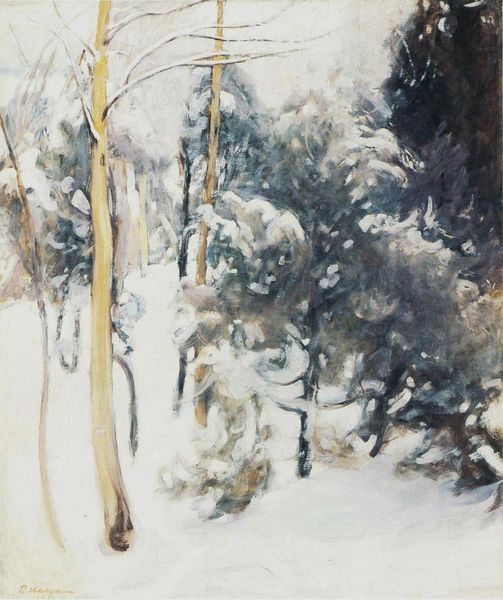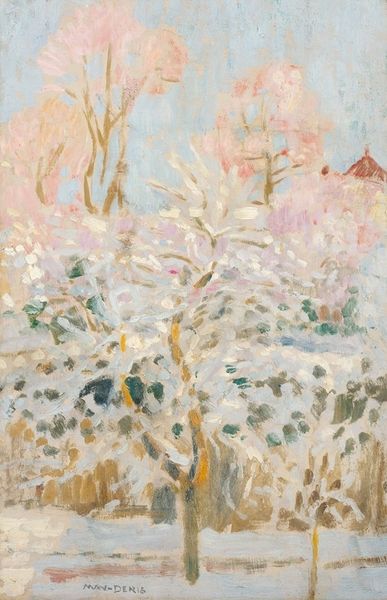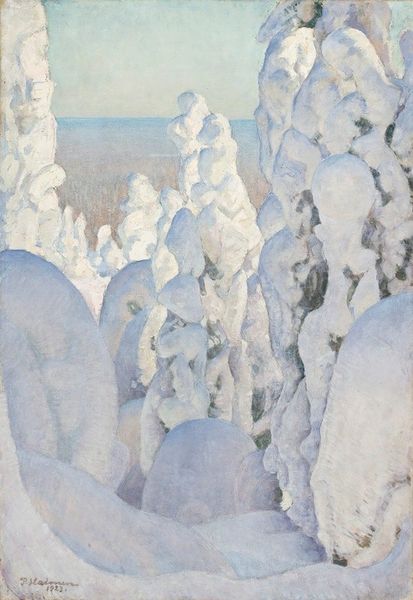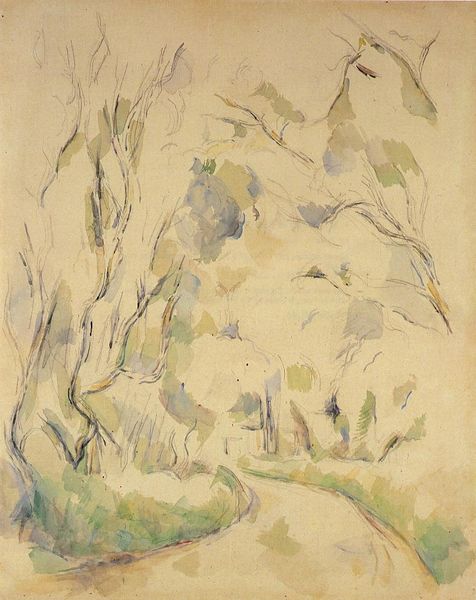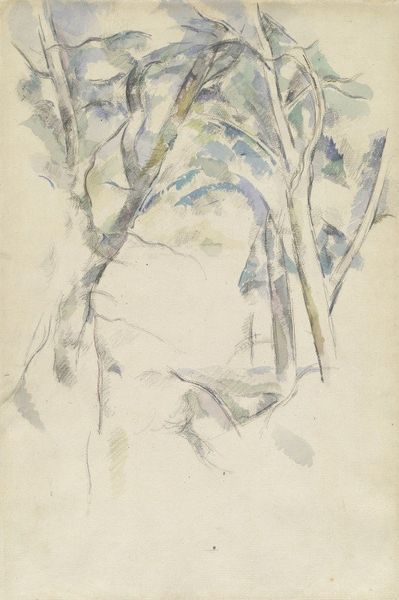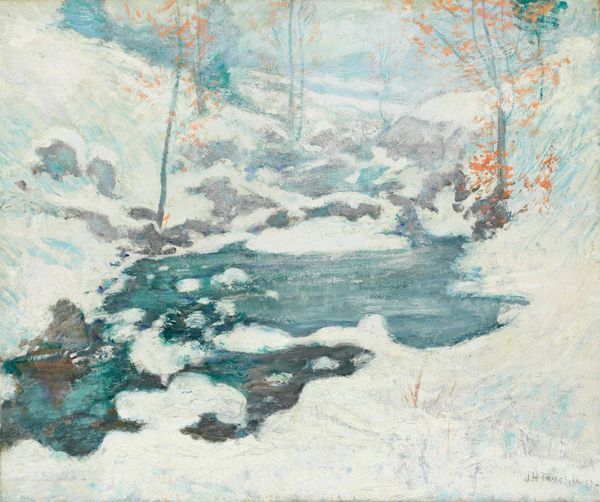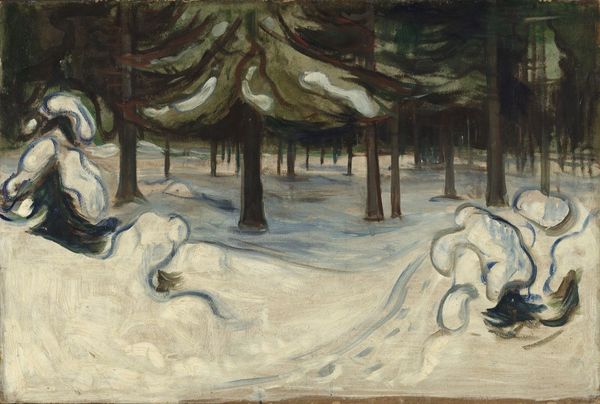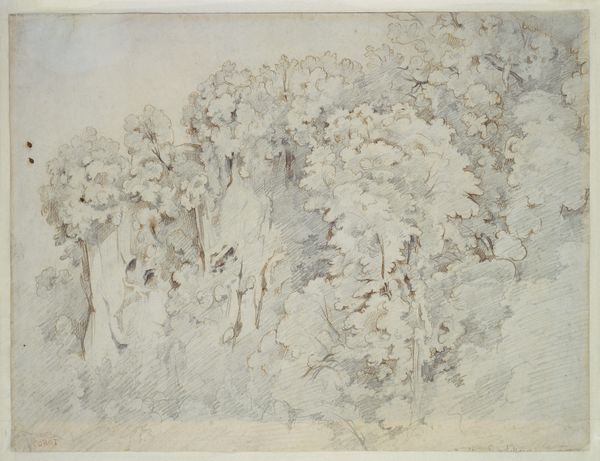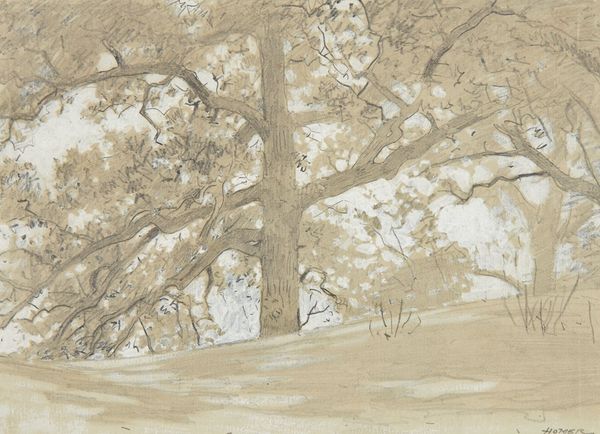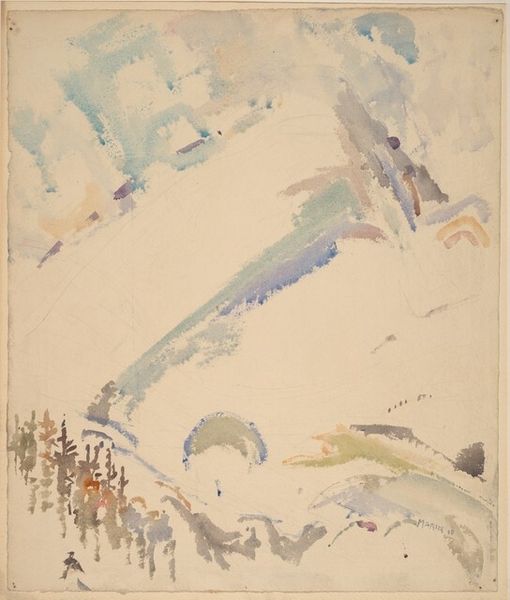
Copyright: Public Domain: Artvee
Curator: Standing before us is Pekka Halonen's "Snow-Covered Pine Saplings," a watercolor piece completed in 1899. Editor: My initial impression is of delicate tranquility. The softness of the watercolor perfectly captures the silent stillness of a snow-laden forest. Curator: Halonen, a Finnish painter, was deeply influenced by the landscapes and working-class life surrounding him. The application of watercolor "en plein air" here reflects a trend among artists to record fleeting impressions. How do you view this method in relation to his social environment? Editor: The plein-air approach lends itself beautifully to the immediacy of the moment; capturing transient qualities, like light shimmering across snow. The composition directs our eyes upward through soft forms and gently contrasts tonal variation. There's a structured ethereal effect here, don’t you agree? Curator: Indeed. And it’s crucial to remember Halonen was a member of the artist colony at Tuusulanjärvi, which cultivated a cultural dialogue steeped in Finnish nationalism and promoted ideals about self-sufficiency. A humble scene becomes representative of broader societal values of perseverance in harsh landscapes. Editor: Considering it was made during a time of growing industrialization in Europe, do you think he might have been rebelling against the mechanization of art by working this way? Curator: Precisely. There is evidence to suggest that Halonen aligned himself with back-to-the-land movements, thus embracing manual skill and valuing local resources while rejecting industrialized modes of production. The materiality becomes important: What makes watercolor so vital to portraying his chosen subjects? Editor: Perhaps its transparency, which adds to that delicate, ethereal feeling, makes snow come alive; almost palpably cold and serene, evoking an atmospheric purity, something solid paints might obscure. Curator: Thinking about how Halonen portrays that particular environment—reflecting artistic exploration in turn-of-the-century Finland coupled with socio-economic ideals—certainly grants an enriched perspective. Editor: Absolutely, looking closely at form and function shows its aesthetic power, offering glimpses beyond simple representations towards a broader understanding about nature's beauty—and the cultural values linked to that particular experience.
Comments
No comments
Be the first to comment and join the conversation on the ultimate creative platform.

